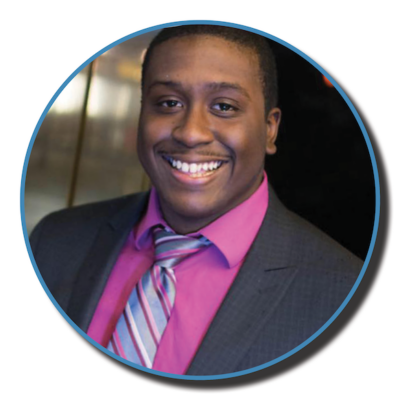Clinical Pastoral Education and the COVID-19 Pandemic: Kalif Crutcher
October 18, 2020
The COVID-19 pandemic has altered nearly every aspect of daily life. For Garrett students participating in Clinical Pastoral Education (CPE), these changes have brought new challenges while proving the importance of their work. Clinical Pastoral Education is an accreditation and training program that teaches students how to provide spiritual care in clinical settings like hospitals, nursing homes, prisons, and addiction treatment centers. A significant part of one’s theological education, CPE provides a learning situation for a ministerial student and continuing education for ministers in which they may develop awareness of the theological and psycho-social concerns of persons in crisis.
So what does CPE that look like when the entire world is in crisis? Here’s Kalif Crutcher’s story.

Kalif Crutcher
Master of Arts in Pastoral Care and Counseling
Buffalo, New York
Considering the COVID-19 pandemic, what concerns did you have with doing CPE? Why did you decide to proceed with CPE this past summer?
One of the biggest concerns that I had doing CPE was how we as chaplains would protect ourselves. I was also concerned with the differing ways that I would have to provide spiritual care to patients and their families. I take seriously the role of presence during ministry encounters. That was significantly reimagined at the height of the pandemic. The reason that I decided to continue with CPE this summer is because of my love for journeying alongside those who are suffering. It was important for me to continue to be as present as possible not only for patients and their families, but also for the frontline healthcare workers who were in the thick of the unknown.
Where did you do your CPE training? What impacts did COVID-19 have on your site and on your learning?
I completed my CPE training at Rush University Medical Center as a Chaplain Resident. As I mentioned previously the role of pastoral and spiritual care was drastically reimagined the past few months. The first thing that changed for us was the hours that we were at the hospital. At my training site we were doing 24 hour on-call shifts. Once the pandemic started, we moved to 12 hour on-call shifts. Additionally, we became much more intentional and focused on staff care.
Regarding my learning, I am grateful for the educators that I had throughout this process. They were attentive to what was happening in the hospital, locally, and also globally. One of the things they challenged us with is learning how to be present with patients and families even if that couldn’t happen physically.
What were the greatest challenges for you personally?
There were about three challenges that were great for me during the height of the pandemic. First, it was a challenge not being able to hold the hands or give hugs to patients and family members, especially at the end of life. Second, it was a challenge having to wear a mask and not being able to show patients and their families my smile or a friendly face. Finally, it was a challenge processing the amount of death that we were experiencing at my hospital.
What was your greatest take-away from this experience?
My greatest take-away from this experience is the importance of chaplaincy, particularly hospital chaplaincy. This experience magnified the essential nature of what it is that chaplain’s provide for patients, families, and staff.

